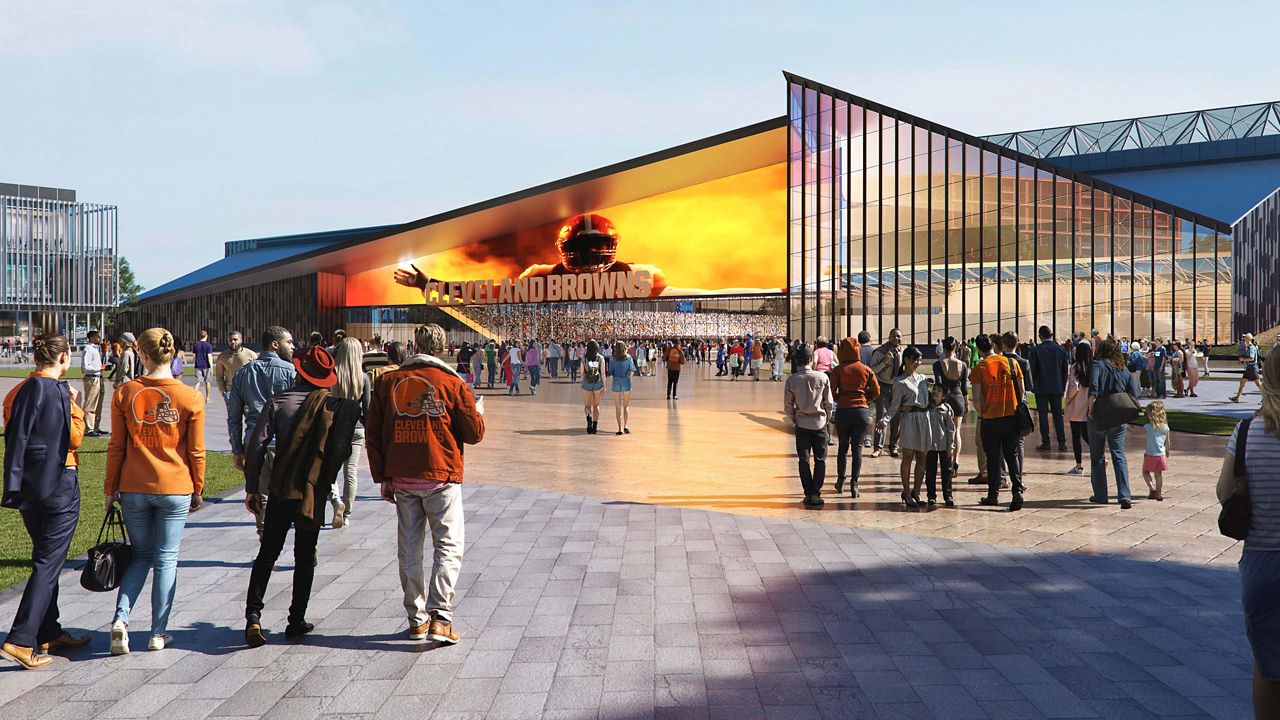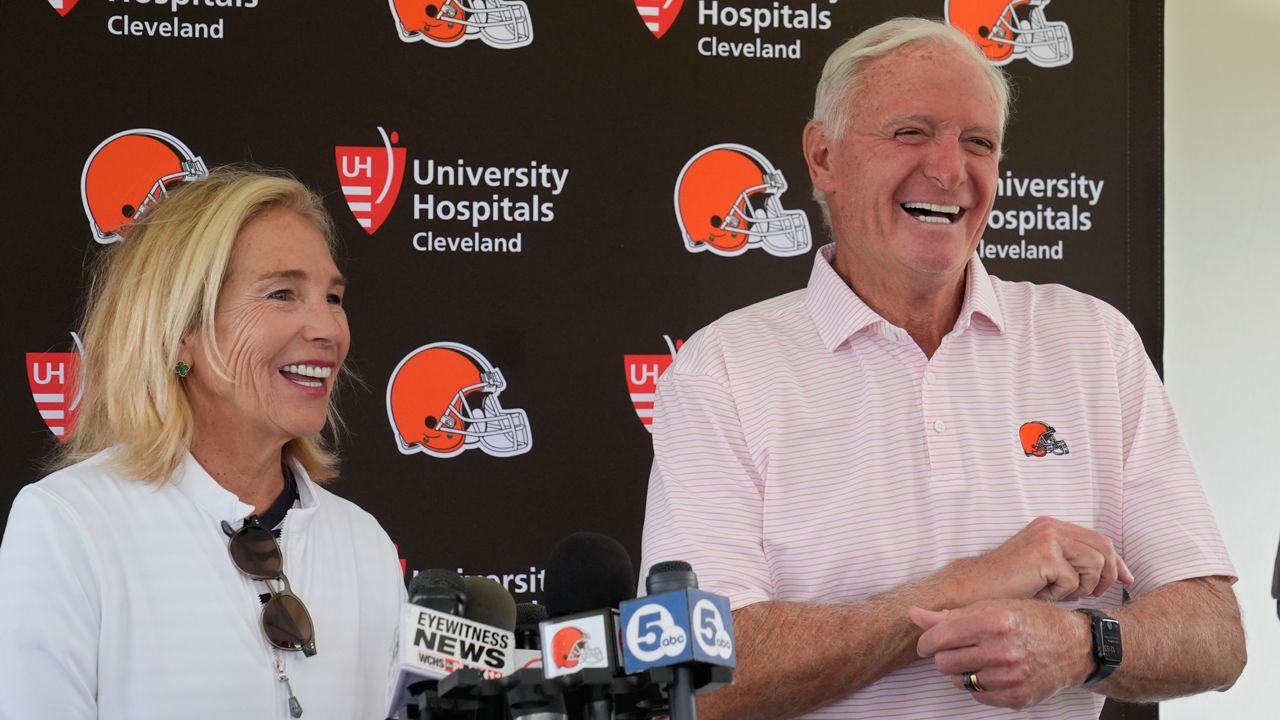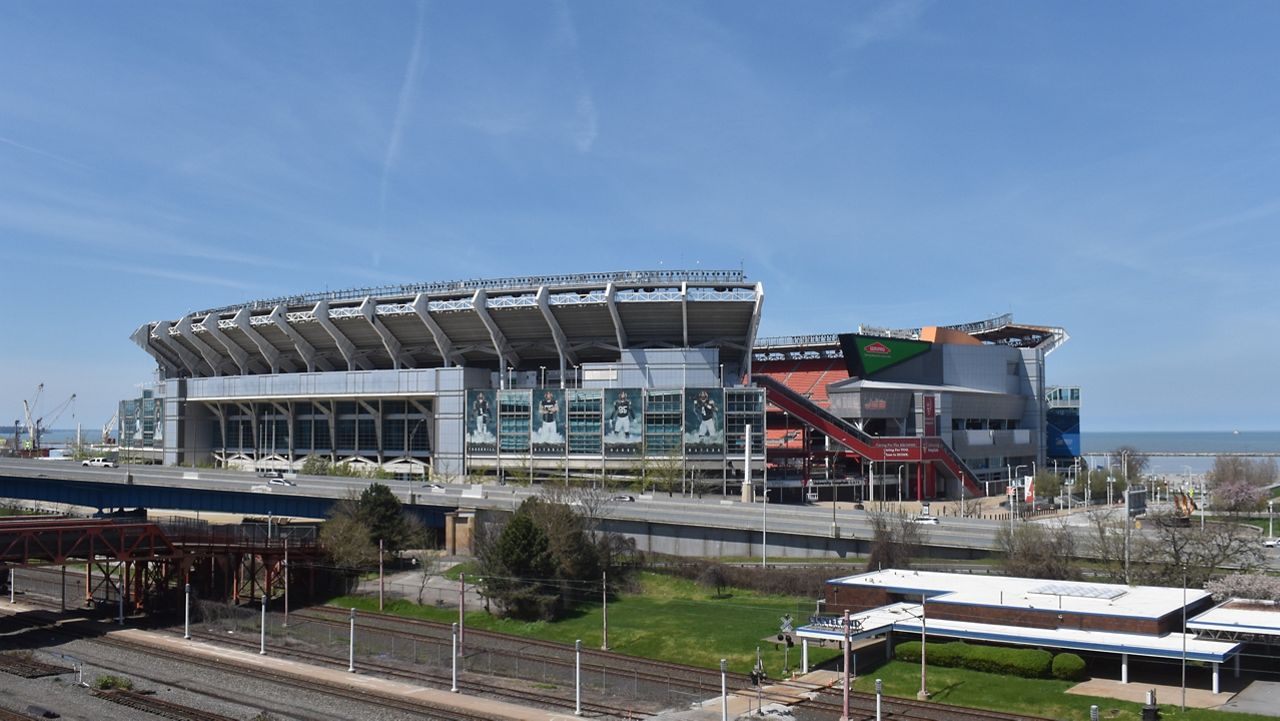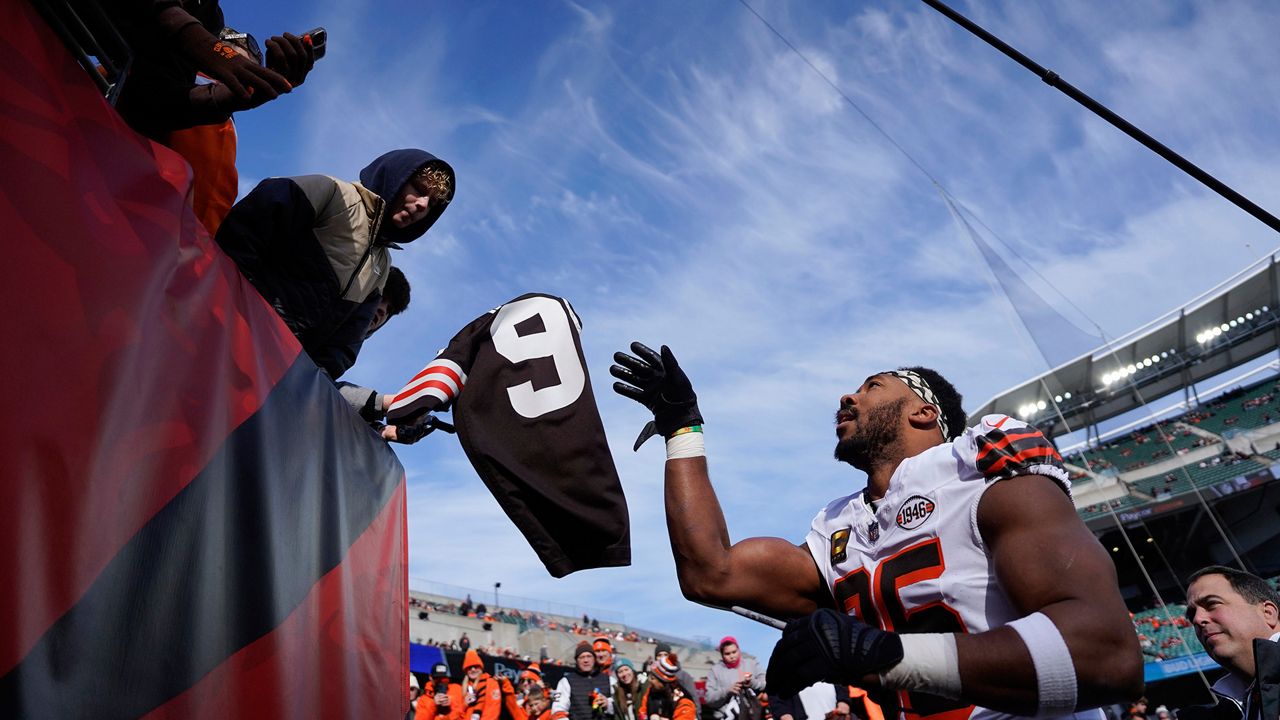CLEVELAND — The discussion over the potential move of the Cleveland Browns stadium continues.
On Thursday, the Browns partially released a study done by RCLCO, a real estate consulting company, which shows a publicly funded stadium in Brook Park would contribute $1.2 billion to the local economy as well as 1.5 million visitors a year.
The release goes on to say the domed stadium would attract three to five more events a year compared to the current stadium, which currently attracts around 670,000 to 770,000 visitors a year.
The study also found that the current Huntington Bank Field attracted 40% of visitors from outside of Ohio during three major non-Browns events in 2024. The study claims 65-75% of visitors in the domed stadium would be outside of Ohio.
The Browns said RCLCO conducted the independent market analysis for the real estate opportunities at the site of the Brook Park development, as well as the potential future of Huntington Bank Field. The analysis looked at programs, pricing and absorption, and analysis of projected fiscal and economic impacts.
“We really look at this site as complementary in the broader landscape of Cleveland and Northeast Ohio, overall,” Managing Director of RCLCO Erin Talkington said. “Most regions, including others in the Midwest, have multiple venues that host events, and today those types of events aren’t coming to Cleveland. So, Cleveland’s spending is actually leaving and going to places like Indianapolis and Detroit to go to those events. So, this is really an opportunity not just for this particular site to have more activity, but for the region to capture economic activity that’s been leaving and to bring in visitor spending that’s not coming here today.”
However, the study contradicts a report released by the City of Cleveland in November. Mayor Justin Bibb released the report, which shows Cleveland would lose roughly $30 million a year, which includes the fees associated with the lease at Huntington Bank Field, spending at downtown bars and restaurants, admissions, hotels and more.
The Browns’ study refutes that, saying that of the predicted $1.2 billion economic gains, around $200 million of that is spending that would happen outside of the Brook Park stadium and instead at places in Cleveland and across the county.
The study’s three main findings – focusing on the viability of the development and new domed stadium, generation of positive economic impact and how relocation will benefit downtown Cleveland – demonstrate the path to success in Brook Park.
Since Bibb announced Jimmy and Dee Haslam, the owners of the Browns, were planning to move the lake-front stadium to Brook Park, there’s been pushback from the City of Cleveland, Cuyahoga County and fans.
Cuyahoga County released a statement Thursday, saying it’s not changing its stance.
“Haslam Sports Group has not shared its economic impact study with us. We don’t want to engage in a game of political football, but a biased report attempting to justify an unprecedented sum of taxpayer money for a new stadium does not change our position, and we’re going to have to throw a flag on the play,” the county wrote in its statement. “Economic impact studies commissioned by organizations with a vested interest often present overly optimistic projections that do not reflect the financial realities faced by local governments and taxpayers. Our residents remain our top priority, and we want to ensure that any public participation benefits them, our communities, and the investments the public and private sector have already made.”
There are also still conversations about how the $2.4 billion domed stadium would be paid for. The Browns haven’t released financial plans for it, but said $1.2 billion would come from taxpayers. It’s not clear on how that would happen. Cuyahoga County has already said it won’t chip in.
The Browns have not yet released the full study.











